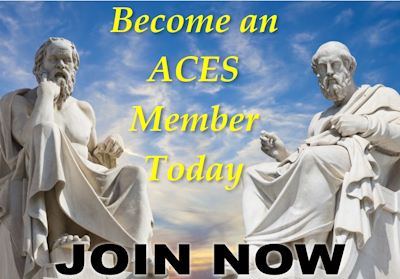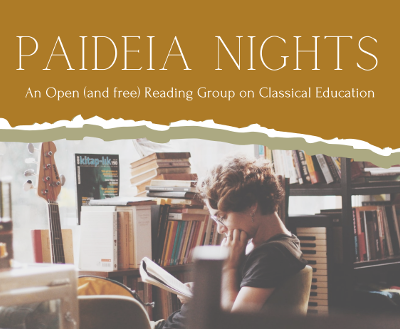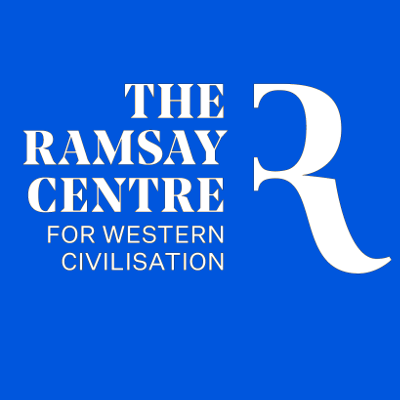Andrew J. Zwerneman
At the heart of an authentic classical education is the range of studies we call the humanities. Together, they are the principal means by which we learn what it is we hold in common as humans: our nature, the human condition, our origins, and our common purposes.
The humanities invite us to answer two foundational questions: Who are we? How ought we live? A classically liberal humanities education—liberal, as in intellectual, spiritual, and moral freedom—deepens our students’ sympathy for the common lot we all possess—our shared limitations and possibilities— and leads them to see the life we have been given as an intrinsic good. Students accrue basic ordered knowledge about our humanity through the study of history; the imagined worlds created by playwrights, poets, novelists, and storytellers; philosophy; fine arts; and, finally, theology.
To teach is to lead our students up and out into the wider world so that they might experience and know what is true, beautiful, and good. Learning is similar to climbing a mountain. The rigors of learning are comparable to the challenges of ascending to a great summit. Once there, the vision of the world is unique: the students see the world as only possible from the perspective of having achieved their learning.
A classically founded liberal education is especially well positioned to serve the purposes of seeing the truth, goodness, and beauty of the life we share. It does so by passing on the West’s culture of seeing. Western culture develops our students’ vision by training them to see what they ought to see and feel what they ought to feel, chiefly through the study of classic works of letters and art.
What we know and love about our humanity is embedded in our students’ cultural inheritance. Right judgments concerning who we are and how we ought to live are embedded in the classic works that hold the center of their training. A vision of what it means to be a person, of our genuine freedom, and of our responsibilities to God, each other, society, and the world we inhabit, is rightly formed at the feet of the West’s greatest writers, artists, and exemplars of human excellence.
With that priority of vision in mind, here is an articulation of how our students can see within five of the major fields of the humanities. I have detailed each field in my forthcoming book, but the heart of the matter in all of them is represented in the summary statements that follow4:
Seeing What Was
We begin with reflections on history because our past is the first major feature of our culture to be forgotten. In order to see as genuine history allows us, we need to note its most important features. Like being and nature, history is a concept of unity by which we get our minds around the whole of things: in this case, the whole of our existence as the past, the present, and the future. As a field within the humanities, history is the study of change in society as it moves in time. Change is a given, not an end. In order to grasp the significance of change, students of history must see the past in its pastness, neither as the present writ small nor as the occasion to condemn the past for not rising to their demands for what it should have been. In other words, they need to study the past observationally and sympathetically, without anachronisms and moralizing. Finally, history is a way of interpreting our existence as a community that consists of the dead, the living, and the yet to be born. It is a way of seeing how we are responsible for one another across generations. To forget that unity is to lose ourselves. To remember it is to see ourselves as recipients of the life passed on by our forebears and as givers of life to our neighbors and to future generations.
Seeing By Way of Imagination
Helen Vendler reminds us why we read imaginative works of any kind: “[I]n order to gain a wider sense of the real.”1 As sympathetic readers working from the inside of a story, we move with the characters, seeing what they see, feeling what they feel within the imagined conditions of the world created by the author or playwright. As readers working from within a poem, we allow the poet’s response to life to move our response to a human experience that is at once recognizable as an experience shared between us and revelatory for what we could not see but for the arrangement of the poem. Either experience deepens our sympathies for the human condition, expands our vision of the world, and situates us in the life we hold together. The habit of imagination is distinct from the habits of memory and exposition but shares common ground since by it, we see what we ought to see and feel what we ought to feel. To move with a character or to follow the voice and movement evident in a poem is to free ourselves to remember who we are by growing in the knowledge of the heart. Thus, even works that reveal what could be—rather than what was, as in history, or what is, as in philosophy—illuminate for us our relational nature.
Seeing the Way Things Are
The first intellectual fruit of a genuine education is the freedom gained by the truth: freedom to know what is true and freedom from unexamined opinion, ideology, and all forms of falsehood. By the careful study of philosophical texts, students learn to think clearly about the most important questions concerning our historical existence: the nature of love, how humans know what they know, their affinity for God, the limits and possibilities of human excellence, and the conditions necessary for genuine order in human society. Since the discovery of the intellect in classical Greece and since we absorbed that event into our cultural mainstream from the middle ages forward, the liberal habits of openness and self-criticism have been hallmarks of Western culture. To see clearly and to know well our nature and our purposes are foundational for the practical habits of choosing and deciding each day how we respond to one another. The habits of the mind, in other words, are ordered, each to the other. Understanding who we are and our relation to one another illuminates deliberations concerning how we exercise our responsibility. In that light, education’s immediate mission lies not in action but, more fundamentally, in understanding. It is the self-appointed provenance of revolutionaries to forego knowing what reality is in order to create a second one. It is the inherited provenance of the liberal keepers of our culture to know what is real.
Seeing What Redeems the World
Visual art meets the human longing for seeing more of life. In itself, sight is good and meaningful; hence, the sensibility that art is for art’s sake. Meaning in art lies chiefly in the work of art itself and in its arrangement of sensual details. Artists capture the world, and, as Roger Scruton puts it, through their visual representations, artists “return the world to us” so that we can see what we could not see otherwise. To say that art meets our longing to see more is not to say that any sight and all sight are meaningful. Rather, the desire for vision is wed to the desire to see what we ought to see. Like imaginative literature and history, art is no occasion to moralize; however, we know what art should and should not be. Art that shocks our sensibilities and obscures the spirit or art that flattens us with banality does not free us to see more of life but less of it.2 Studio art and film mediate between the artist and us and between the world and us. The visual work frees the artist to represent what can be seen in the world and frees us to see for ourselves—to recreate for ourselves the experience of seeing what the artist sees as one who inhabits the world we inhabit together. Properly arranged visual art is inherently relational. It situates us in the world by illuminating what we already have.
Seeing Our Neighbor
Our society is increasingly secular, but our origins in ancient Israel are permanently religious. The liberal purposes of a genuine learning culture will allow for the exploration of the scriptures if for no other reason than for their historical importance and for the enduring vision they offer of our humanity. The University of Chicago’s Leon Kass, for one, has for decades led his seminar students through careful discussion of the Jewish scriptures, among other classic works in the Western canon. Here is what he says of his study of Exodus among colleagues and students:
[H]aving now for years entered sympathetically into the story, inhabited the characters, discussed their experiences with diverse colleagues and generations of students, pondered the law, and thought with the text and not just about it, I have felt it change my feelings and thoughts about important matters. Precisely because the world of the text is so different from my own . . . it has proved to be a powerful mirror in which to look at my own complacent understandings of significant subjects. By giving me a world that is not graspable by my familiar concepts, it has forced me to reconsider many previously unexamined notions and prejudices.3
We can share Professor Kass’ confidence that the scriptures are important to humane studies. They are not only the chief written record of what we know and love about our culture’s origins in ancient Israel; they expand our experience of the world beyond our more limited experience. That record is the principal articulation of the source we identify as revelation, which historically forged and continues to be the foundation in our culture for the love of God and neighbor. That love touches and, in some discernible way, directs every major sphere of Western culture. It is foundational to the vision we hold of the individual life at the center of the life we have in common.
Final Thoughts
We all sense a great urgency—that the culture around us is increasingly fractured, that education in particular is increasingly at odds with the humanity of our students. To recover our bearings concerning culture and education, we need a renewal of vision. A good way to start is to restore a proper understanding of what it means to see who we are and how we ought to live. In serving our young neighbors, and in preserving our cultural patrimony and theirs, we can do no better than to revisit the humanities, to revitalize their content, and to rejuvenate their role at the center of our students’ learning.
Andrew J. Zwerneman is co-founder and president of Cana Academy. He is author of History Forgotten and Remembered, published in 2020, and of The Life We Have Together: A Case for Humane Studies, A Vision for Renewal—each, published by Cana Academy. Andrew blogs weekly at www.canaacademy.org.
1 Helen Vendler, Poems, Poets, and Poetry, (Boston: Bedford/St. Martin’s, 2002), xiii.
2 See Roger Scruton, “The Uses of Criticism” in Culture Counts and “Art and Eros” in Beauty.
3 Leon R. Kass, Founding God’s Nation: Reading Exodus (Yale University Press, 2021), 11.
4 The five summaries are taken from Andrew J. Zwerneman, The Life We Have Together: A Case for Humane Studies, A Vision for Renewal, (Falls Church: Cana Academy, 2022).






